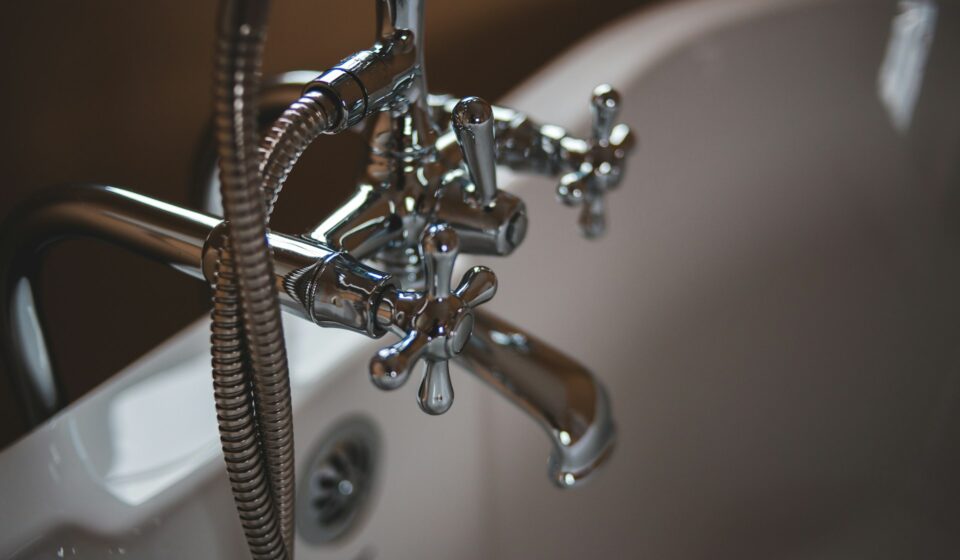
Silent Threats: Spotting Water Leaks Before They Damage Your Home
Water damage ranks among the most costly and destructive problems homeowners face. While some leaks announce themselves with obvious drips or puddles, many remain hidden for months or even years, silently wreaking havoc on your property’s structure and your wallet. Understanding how to identify these concealed threats can save you thousands of dollars in repairs and prevent serious health hazards like mold growth.
Table Of Content
- Understanding Common Sources of Hidden Water Leaks
- Behind Walls and Ceilings
- Under Concrete Slabs
- Around Appliances and Fixtures
- Visual Inspection Techniques
- Examining Walls and Ceilings
- Inspecting Flooring
- Checking Exterior Signs
- Monitoring Your Water Usage
- Understanding Your Water Bill
- Performing the Water Meter Test
- Using Technology for Leak Detection
- Water Leak Detection Devices
- Thermal Imaging
- Professional Plumbing Inspection Methods
- When to Call Professionals
- Professional Detection Equipment
- Prevention and Maintenance Strategies
- Regular Maintenance Schedules
- Monitoring Water Pressure
- Protecting Pipes from Freezing
- Taking Action Against Hidden Water Threats
Hidden water leaks occur in places you rarely inspect—inside walls, under slabs, behind appliances, and within your home’s plumbing system. These silent invaders can cause extensive damage before you notice any visible signs. This comprehensive guide will teach you how to detect water leaks early, recognize warning signs, and know when to call professionals for help.
Understanding Common Sources of Hidden Water Leaks
Behind Walls and Ceilings
Water lines running through your walls and ceiling spaces are particularly vulnerable to leaks. These pipes face constant pressure changes, temperature fluctuations, and natural wear over time. When they fail, water can seep into drywall, insulation, and wooden framing before you notice any exterior signs.
Older homes with galvanized steel pipes are especially susceptible to corrosion-related leaks. Even newer homes aren’t immune—poor installation, settling foundations, and manufacturing defects can cause problems in pipes of any age.
Under Concrete Slabs
Slab leaks occur when water lines beneath your home’s concrete foundation develop cracks or breaks. These leaks are particularly dangerous because they can undermine your foundation’s stability while remaining completely invisible from above.
Hot water slab leaks often produce the first noticeable symptoms because they create temperature differences you can feel through the flooring. Cold water slab leaks, however, may go undetected much longer since they don’t produce obvious temperature changes.
Around Appliances and Fixtures
Water-using appliances like washing machines, dishwashers, water heaters, and refrigerators with ice makers contain multiple connection points where leaks can develop. These connections experience regular vibration and pressure changes that can loosen fittings over time.
Bathroom fixtures, including toilets, showers, and sinks, also harbor potential leak sources. The seals around these fixtures deteriorate with age, and the connections behind walls may develop problems without obvious external signs.
Visual Inspection Techniques
Examining Walls and Ceilings
Start your leak detection process with a thorough visual inspection of your home’s interior surfaces. Look for water stains, which often appear as yellowish or brownish discoloration on walls and ceilings. These stains may seem minor initially but typically indicate ongoing moisture problems.
Pay attention to paint or wallpaper that’s bubbling, peeling, or showing signs of moisture damage. Drywall that appears warped, soft, or discolored requires immediate investigation. Check corners where walls meet ceilings, as these areas often show the first signs of roof or plumbing leaks.
Inspecting Flooring
Examine your floors for signs of water damage, including warping, buckling, or discoloration in hardwood floors. Carpet that feels perpetually damp or shows unexplained stains may indicate underlying leaks. Tile floors with loose tiles or deteriorating grout lines often signal moisture problems beneath.
Vinyl and laminate flooring may show bubbling or lifting edges when exposed to moisture. Even concrete floors can develop cracks or show efflorescence (white, chalky deposits) when water leaks occur below.
Checking Exterior Signs
Walk around your home’s exterior looking for signs of water damage or unusual moisture. Foundation cracks, settling, or areas where the ground seems perpetually wet may indicate slab leaks. Check for water stains on exterior walls, particularly around windows and doors.
Examine your roof for missing shingles, damaged flashing, or other issues that could allow water infiltration. While roof leaks differ from plumbing leaks, both can cause hidden water damage requiring professional attention.
Monitoring Your Water Usage
Understanding Your Water Bill
Your monthly water bill provides valuable insights into potential leak problems. Sudden increases in water usage without corresponding changes in your household habits often indicate hidden leaks. Track your water consumption over several months to establish baseline usage patterns.
Most water utilities charge based on cubic feet or gallons used. A single dripping faucet can waste hundreds of gallons monthly, while hidden leaks can waste thousands. Compare your current usage to previous months and similar periods in previous years.
Performing the Water Meter Test
The water meter test is one of the most effective ways to detect hidden leaks anywhere in your plumbing system. Start by turning off all water-using appliances and fixtures in your home. This includes dishwashers, washing machines, ice makers, and irrigation systems.
Locate your water meter, typically found near the street or at your property line. Record the current reading exactly, including all digits and decimal places. Wait for two hours without using any water, then check the meter again. Any change in the reading indicates a leak somewhere in your system.
For more sensitive detection, many water meters include a small triangle or star-shaped indicator that moves when any water flows through the system. This indicator should remain completely stationary when all fixtures are turned off.
Using Technology for Leak Detection
Water Leak Detection Devices
Modern technology offers homeowners several options for automated leak detection. Smart water sensors can be placed near appliances, under sinks, and in basements to alert you immediately when moisture is detected. These devices often connect to your smartphone, providing instant notifications even when you’re away from home.
Whole-house water monitoring systems are installed directly into your main water line and can detect even small changes in water pressure or flow that may indicate leaks. These systems learn your household’s normal water usage patterns and alert you to anomalies that might signal problems.
Thermal Imaging
Professional plumbers and home inspectors use thermal imaging cameras to detect temperature differences that indicate hidden leaks. Hot water leaks create warm spots visible through thermal imaging, while cold water leaks may show as cooler areas.
While professional-grade thermal cameras are expensive, some smartphone attachments provide basic thermal imaging capabilities that can help identify obvious temperature anomalies in walls or floors.
Professional Plumbing Inspection Methods
When to Call Professionals
While homeowners can identify many leak indicators, professional plumbing inspection becomes necessary when you suspect hidden leaks but cannot locate their source. Professional plumbers have specialized equipment and expertise to find leaks without unnecessary demolition.
Call professionals if you notice signs like unexplained increases in water bills, sounds of running water when fixtures are off, warm spots on floors, or musty odors that might indicate hidden moisture problems.
Professional Detection Equipment
Professional plumbers use electronic listening devices that can detect the sound of water escaping from pipes, even behind walls or under concrete. These devices amplify subtle sounds that indicate leak locations with remarkable accuracy.
Pressure testing equipment allows professionals to isolate sections of your plumbing system and test for pressure drops that indicate leaks. This method helps pinpoint leak locations before any demolition begins.
Video inspection equipment, including small cameras that can travel through pipes, provides visual confirmation of pipe conditions and leak locations. This technology is particularly useful for inspecting sewer lines and other pipes that are difficult to access.
Prevention and Maintenance Strategies
Regular Maintenance Schedules
Establishing a regular maintenance routine helps prevent many common leak problems. Schedule annual inspections of your plumbing system, including checking visible pipes, fixtures, and appliances for signs of wear or damage.
Replace washing machine hoses every five years, even if they appear fine. These hoses are under constant pressure and can fail suddenly, causing significant water damage. Similarly, inspect and replace toilet wax rings, faucet washers, and other components according to manufacturer recommendations.
Monitoring Water Pressure
Excessive water pressure can cause premature failure of pipes, fixtures, and appliances. Water pressure above 80 PSI can stress your plumbing system and increase leak risk. Have your water pressure tested and install a pressure-reducing valve if necessary.
Fluctuating water pressure can also indicate developing problems in your plumbing system. If you notice sudden changes in water pressure, investigate immediately to prevent more serious issues.
Protecting Pipes from Freezing
Frozen pipes are a common cause of serious leaks when they thaw. Insulate pipes in unheated areas like basements, crawl spaces, and garages. During cold weather, allow faucets to drip slightly to maintain water movement and prevent freezing.
Know the location of your main water shutoff valve and ensure all household members understand how to use it in emergencies. Quick action during a pipe failure can prevent extensive water damage.
Taking Action Against Hidden Water Threats
Hidden water leaks pose serious risks to your home’s structure, your family’s health, and your financial security. By combining regular visual inspections, water usage monitoring, and professional expertise when needed, you can detect these problems early and minimize their impact.
Remember that early detection saves money and prevents extensive damage. Don’t ignore subtle signs like unexplained water bill increases, musty odors, or minor discoloration. These seemingly minor issues often indicate larger problems that require immediate attention.
For comprehensive leak detection and professional plumbing inspection services, visit this website to connect with qualified professionals in your area. Taking proactive steps now can protect your home and family from the devastating effects of hidden water damage.



